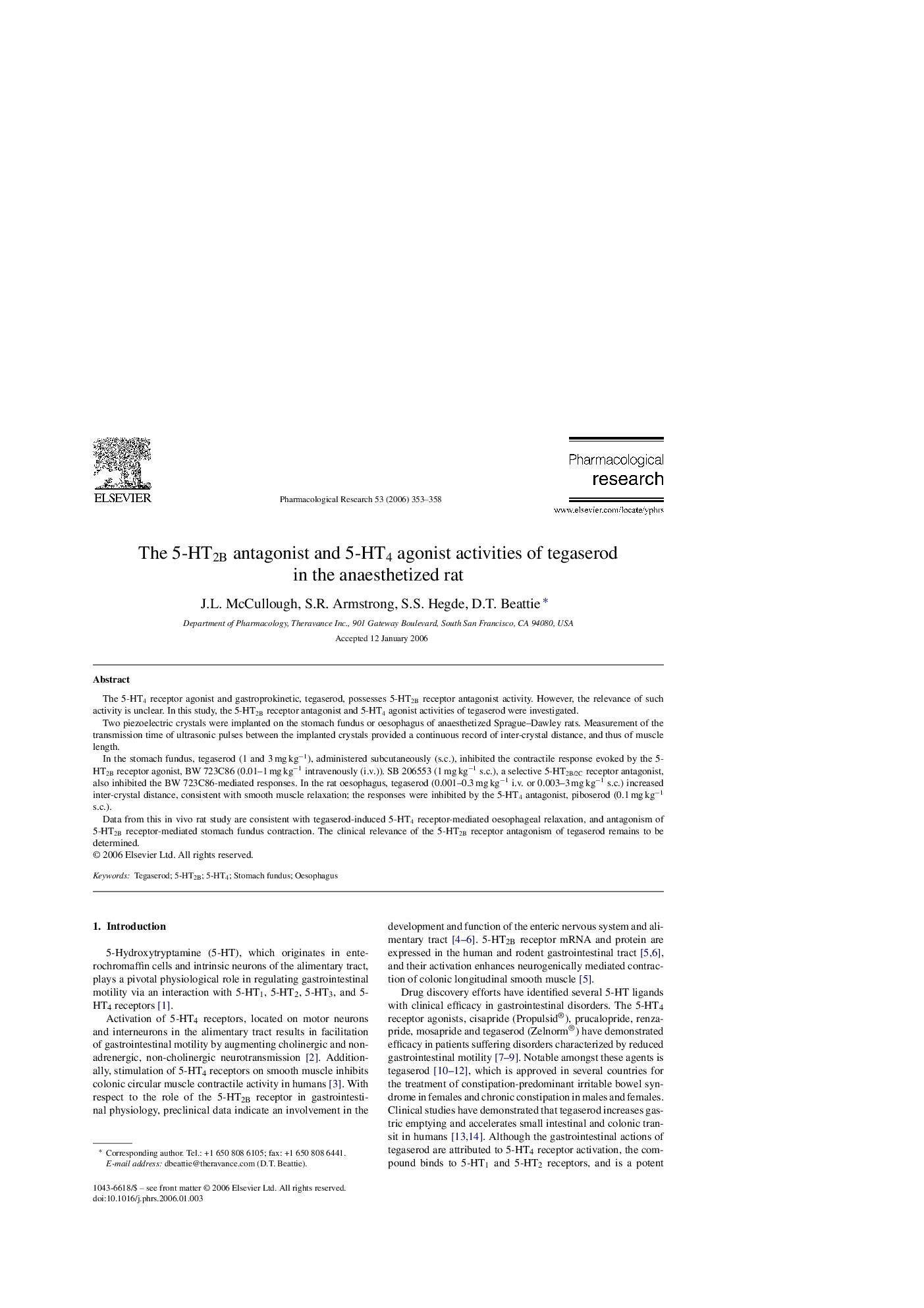| Article ID | Journal | Published Year | Pages | File Type |
|---|---|---|---|---|
| 2562685 | Pharmacological Research | 2006 | 6 Pages |
The 5-HT4 receptor agonist and gastroprokinetic, tegaserod, possesses 5-HT2B receptor antagonist activity. However, the relevance of such activity is unclear. In this study, the 5-HT2B receptor antagonist and 5-HT4 agonist activities of tegaserod were investigated.Two piezoelectric crystals were implanted on the stomach fundus or oesophagus of anaesthetized Sprague–Dawley rats. Measurement of the transmission time of ultrasonic pulses between the implanted crystals provided a continuous record of inter-crystal distance, and thus of muscle length.In the stomach fundus, tegaserod (1 and 3 mg kg−1), administered subcutaneously (s.c.), inhibited the contractile response evoked by the 5-HT2B receptor agonist, BW 723C86 (0.01–1 mg kg−1 intravenously (i.v.)). SB 206553 (1 mg kg−1 s.c.), a selective 5-HT2B/2C receptor antagonist, also inhibited the BW 723C86-mediated responses. In the rat oesophagus, tegaserod (0.001–0.3 mg kg−1 i.v. or 0.003–3 mg kg−1 s.c.) increased inter-crystal distance, consistent with smooth muscle relaxation; the responses were inhibited by the 5-HT4 antagonist, piboserod (0.1 mg kg−1 s.c.).Data from this in vivo rat study are consistent with tegaserod-induced 5-HT4 receptor-mediated oesophageal relaxation, and antagonism of 5-HT2B receptor-mediated stomach fundus contraction. The clinical relevance of the 5-HT2B receptor antagonism of tegaserod remains to be determined.
